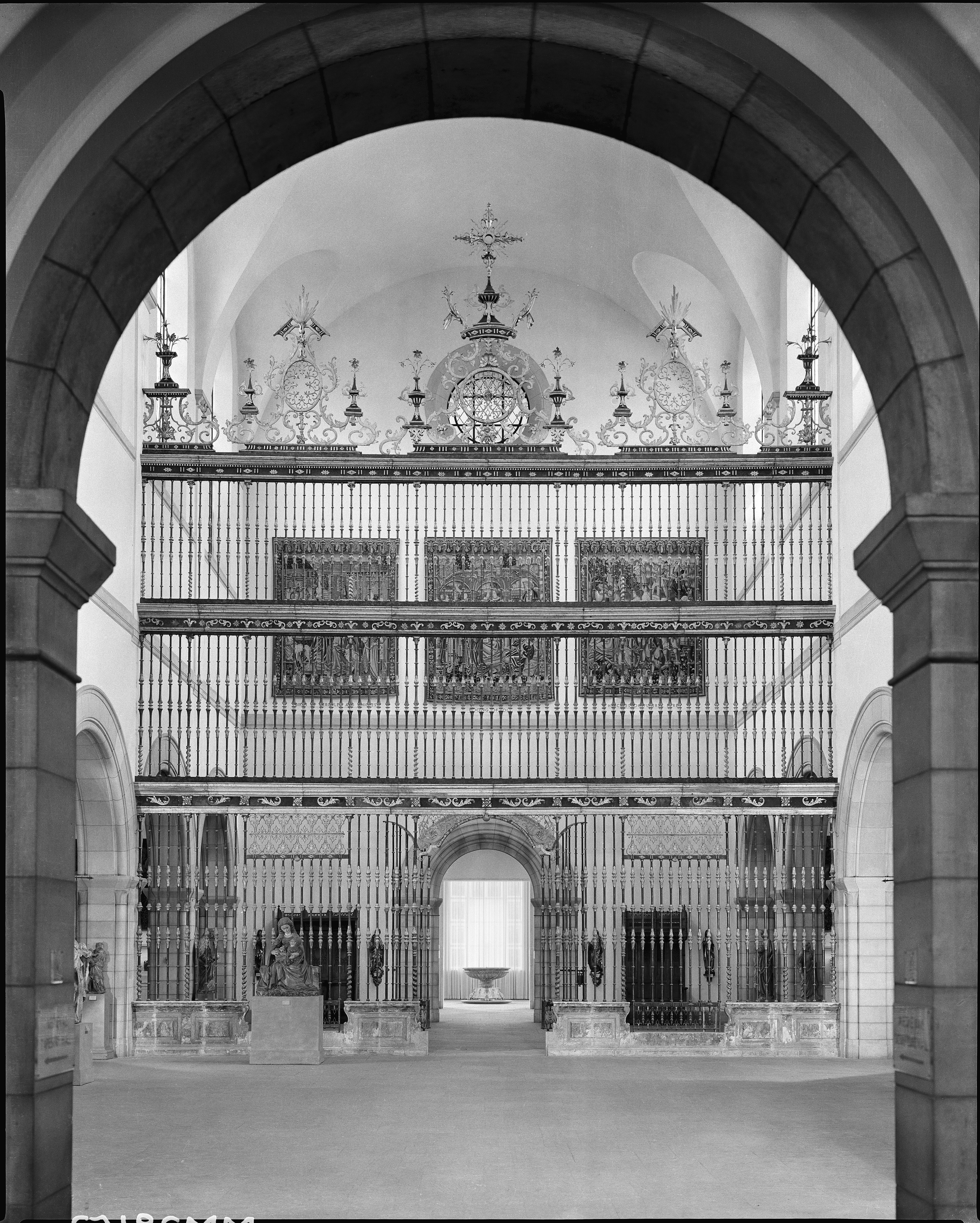Choir screen from the Cathedral of Valladolid
Attributed to Rafal Amezúa
Spanish ironworkers were provided with numerous commissions for grille work such as window grilles and balcony grilles, but the most important were the grilles, or screens, used to divide certain parts of a church from others. Spanish chapel screens of ambitious proportions were already being made during the last years of the fifteenth century, but early in the sixteenth century the Spanish smiths began to replace the square-sectioned or twisted iron bar with the slender, baluster-shaped iron spindle. Renaissance screens, or rejas, were composed of two or three tiers of spindles hammered from solid iron in the lightest, most symmetrical of forms and cold-chiseled with decorative foliation. These rejas proved so satisfying a solution to the screening of Spanish church choirs and chapels that they long remained models for Spanish ironworkers (rejeros). The Museum's monumental reja, although closely based on Renaissance models, was commissioned by an eighteenth-century patron, Isidro Cosio y Bustamante, bishop of Valladolid, and installed in 1763 in the nave of the Cathedral of Valladolid, where it divided the choir from the high altar. The cresting and the gilding of the ironwork were completed a year later.
#851. Kids: Choir Screen from the Cathedral of Valladolid
Due to rights restrictions, this image cannot be enlarged, viewed at full screen, or downloaded.
This artwork is meant to be viewed from right to left. Scroll left to view more.





